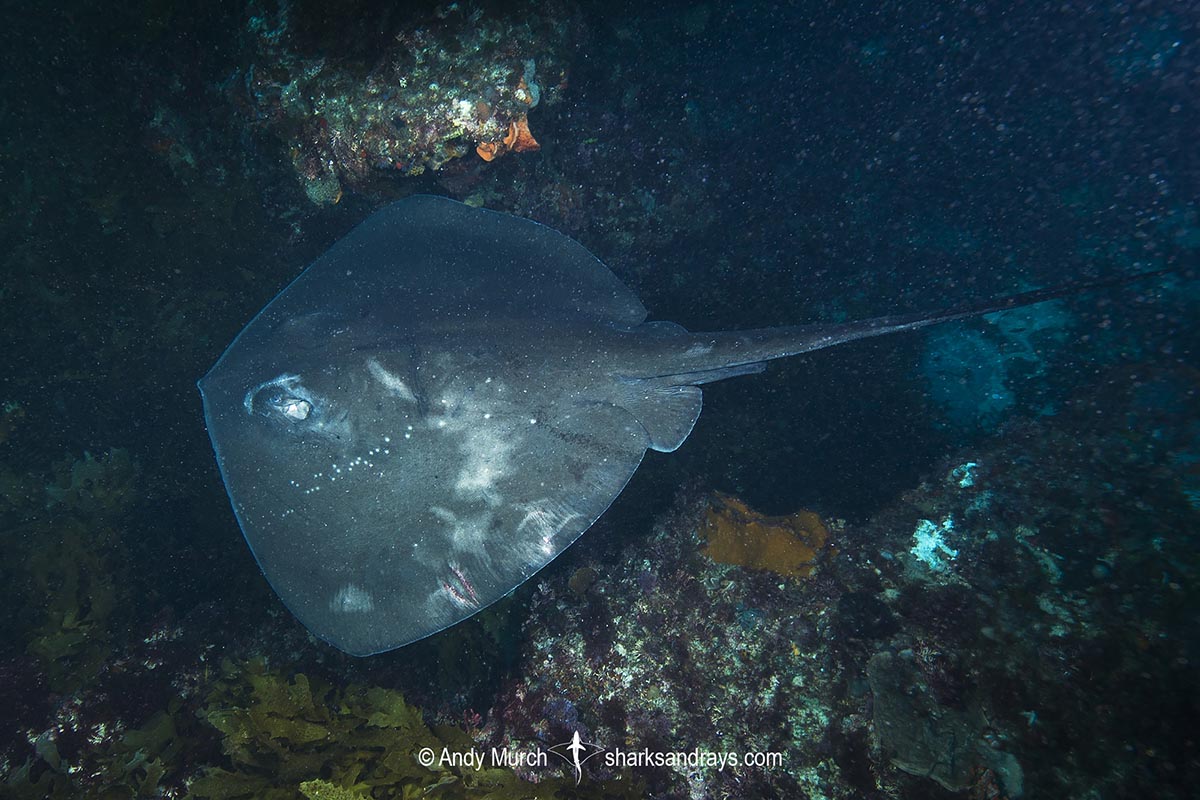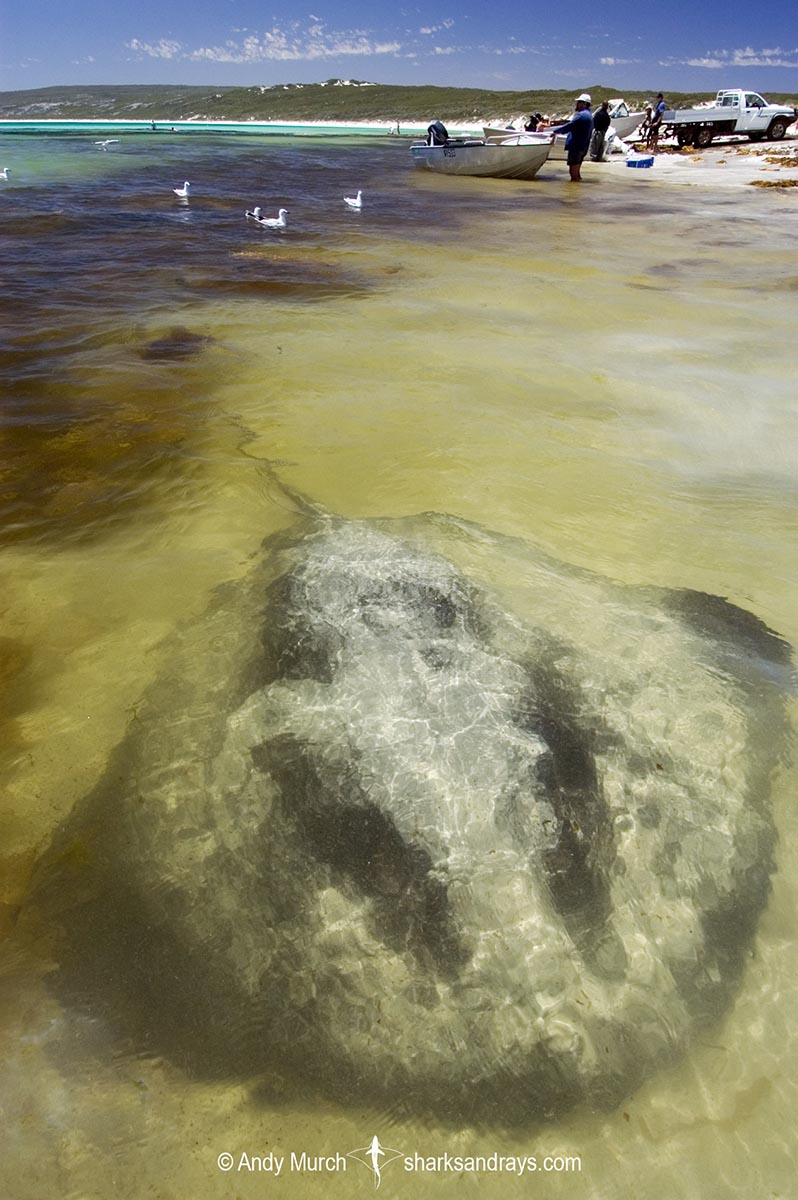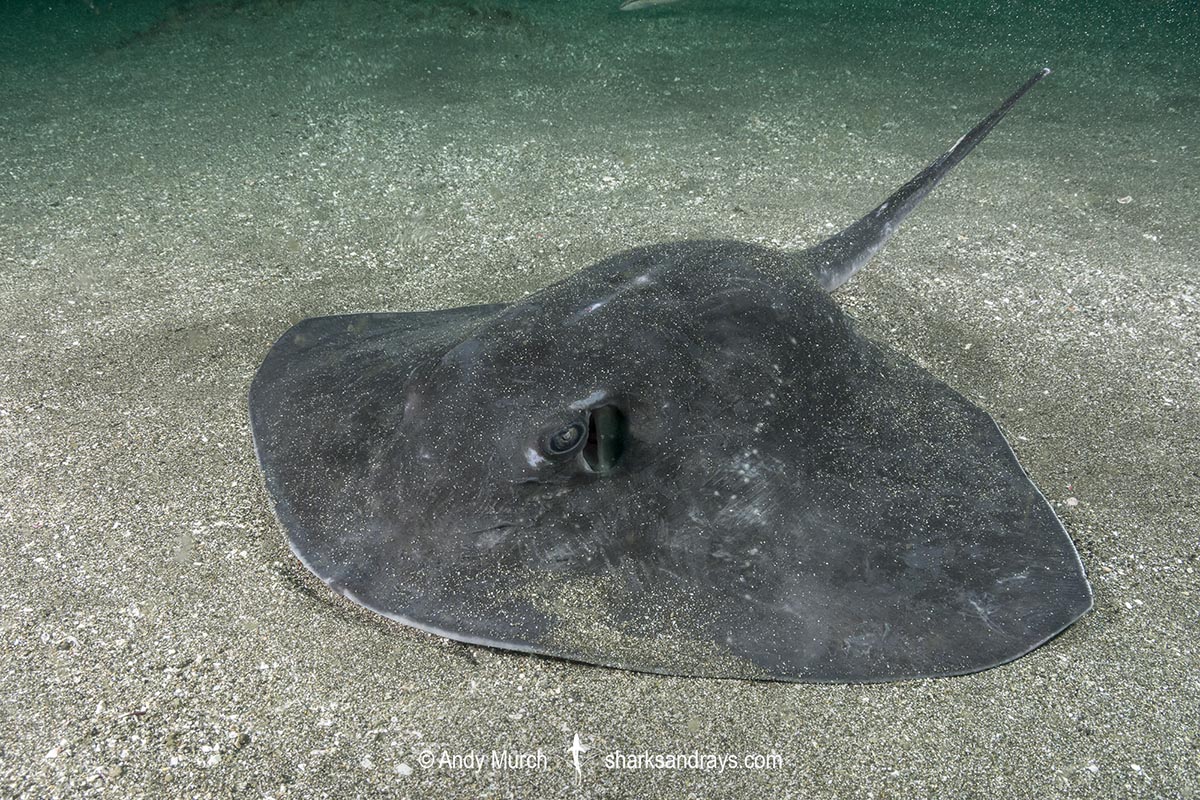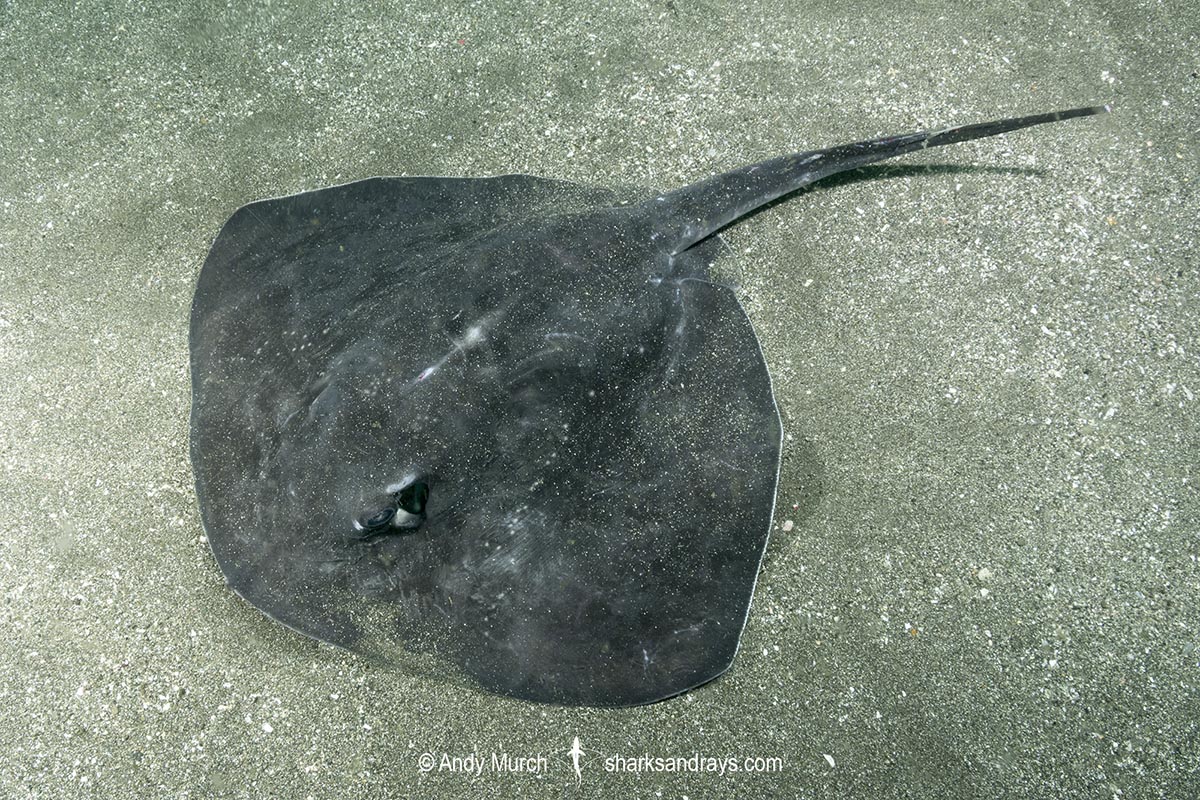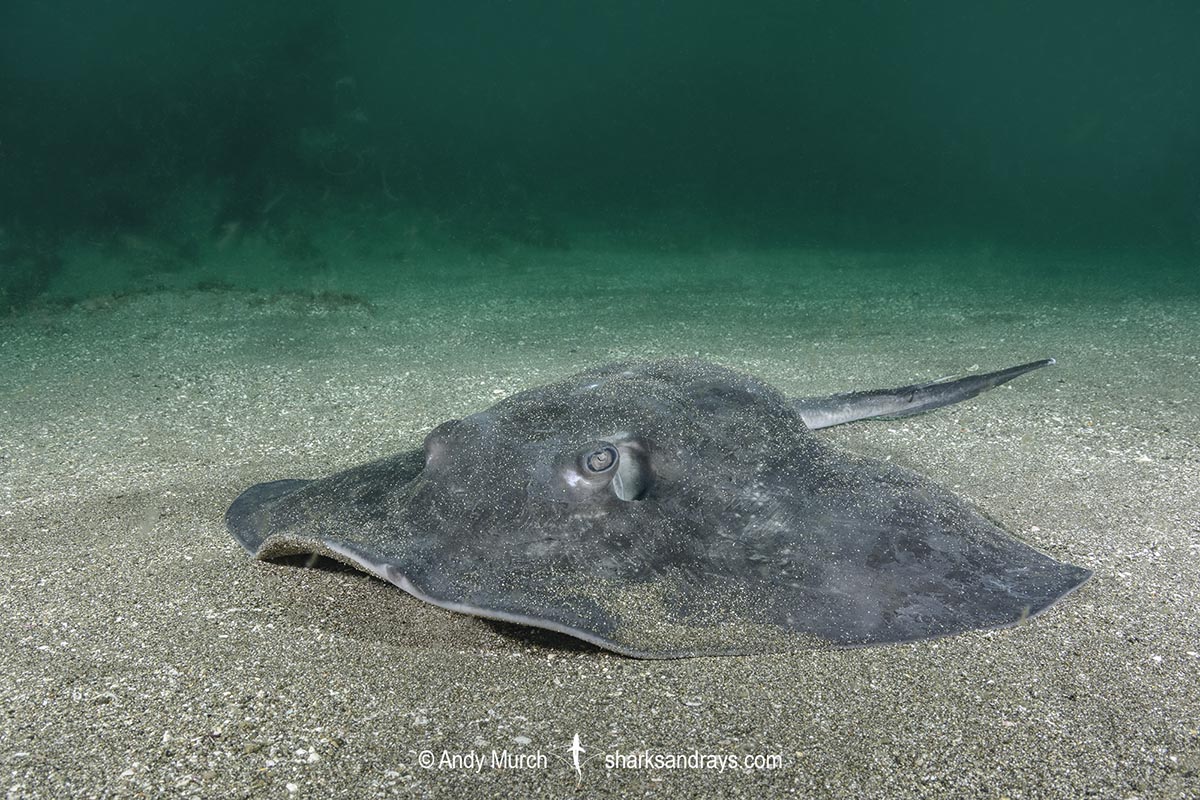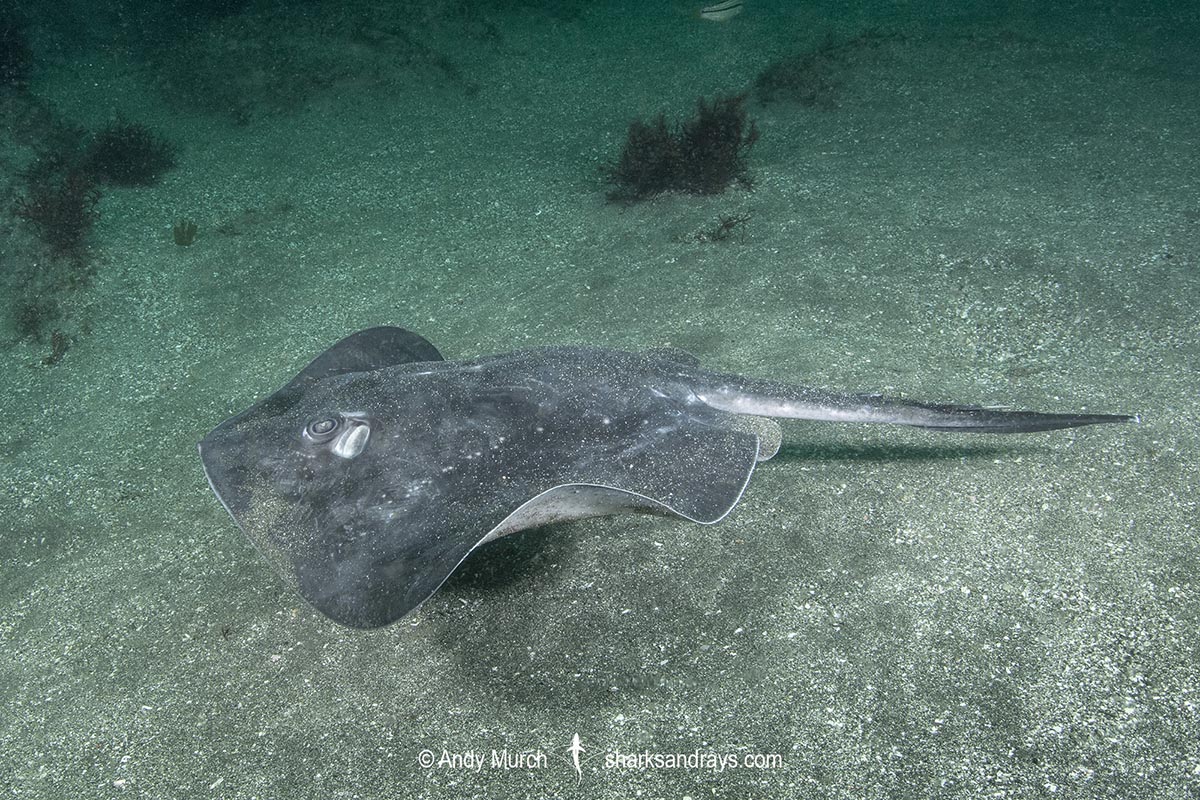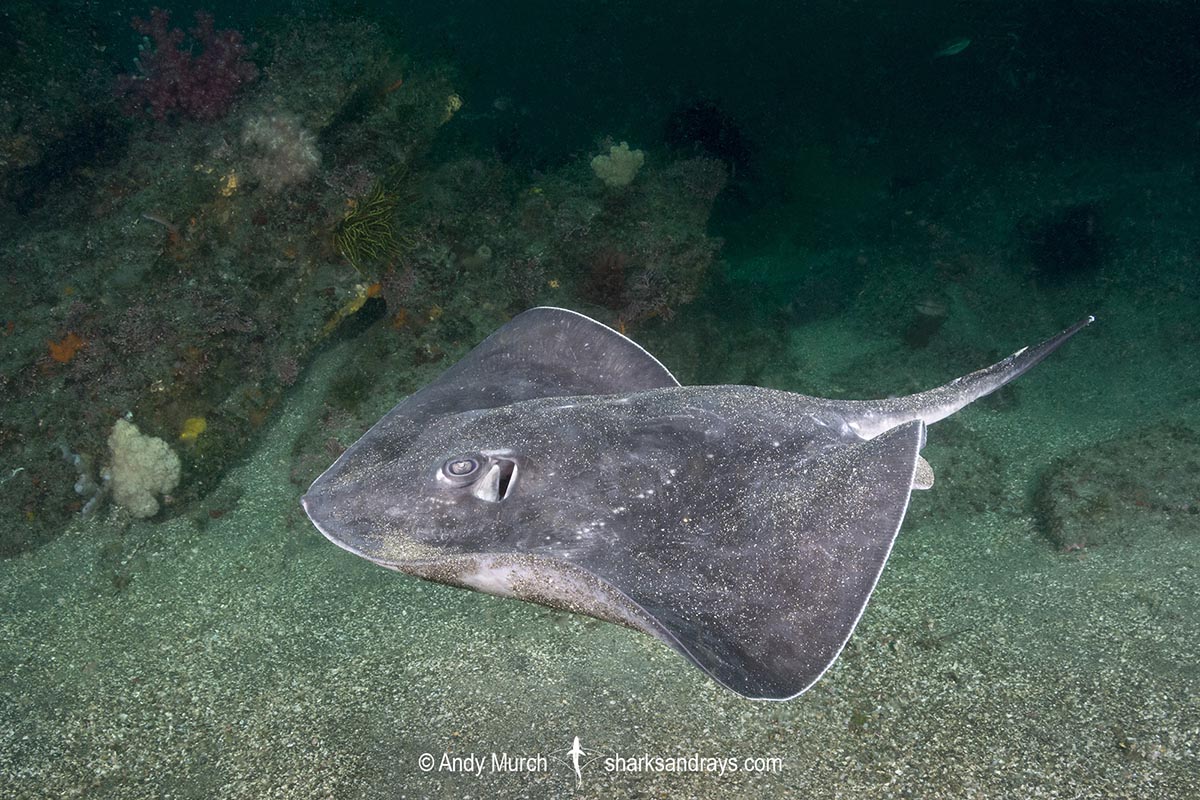Common names
Short-tail Stingray, Smooth Stingray.
Binomial
Bathytoshia brevicaudata.
Synonyms
Dasyatis brevicaudata, Dasyatis brevicaudatus, Dasyatis matsubarai, Dasyatis schreineri, Trygon brevicaudata, Trygon schreineri, Urolophoides matsubarai.
Identification
A very large, thick bodied stingray with a kite-shaped disc that is slightly wider than long; disc width approximately 1.1-1.2 x length. Snout short and obtuse with a small protruding tip. Anterior margins of disc mildly convex. Pectoral fin apexes narrowly rounded. Pelvic fins relatively small with narrowly rounded apexes.
Eyes relatively small. Snout length 2-2.2 x combined eye and spiracle length.
Mouth contains 5-7 oral papillae. Deep labial furrows around mouth. Lower jaw weakly convex. Extremely broad, skirt shaped nasal curtain with a fringed margin. Nostrils oval shaped. Dorsal surface lacks dermal denticles but specimens exceeding 45cm DW have a row of stellate thorns and tubercles on midline of tail from base to caudal spine. Sharp thornlets cover tail beyond caudal spine. Tail relatively very wide, and depressed at base. Tail length usually shorter than disc width. Dorsal finfold reduced to a hard ridge.
Colour
Dorsum uniformly grey, slate grey, grey-brown, or almost black, with a row of small white pores on each pectoral fin that start close to mid points of the anterior pectoral fin margins, and run diagonally backwards, parallel to the pectoral fin posterior margins. Ventrum white; usually with a dusky disc margin.
Size
Maximum disc width 210cm. Disc width at birth 32-36cm.
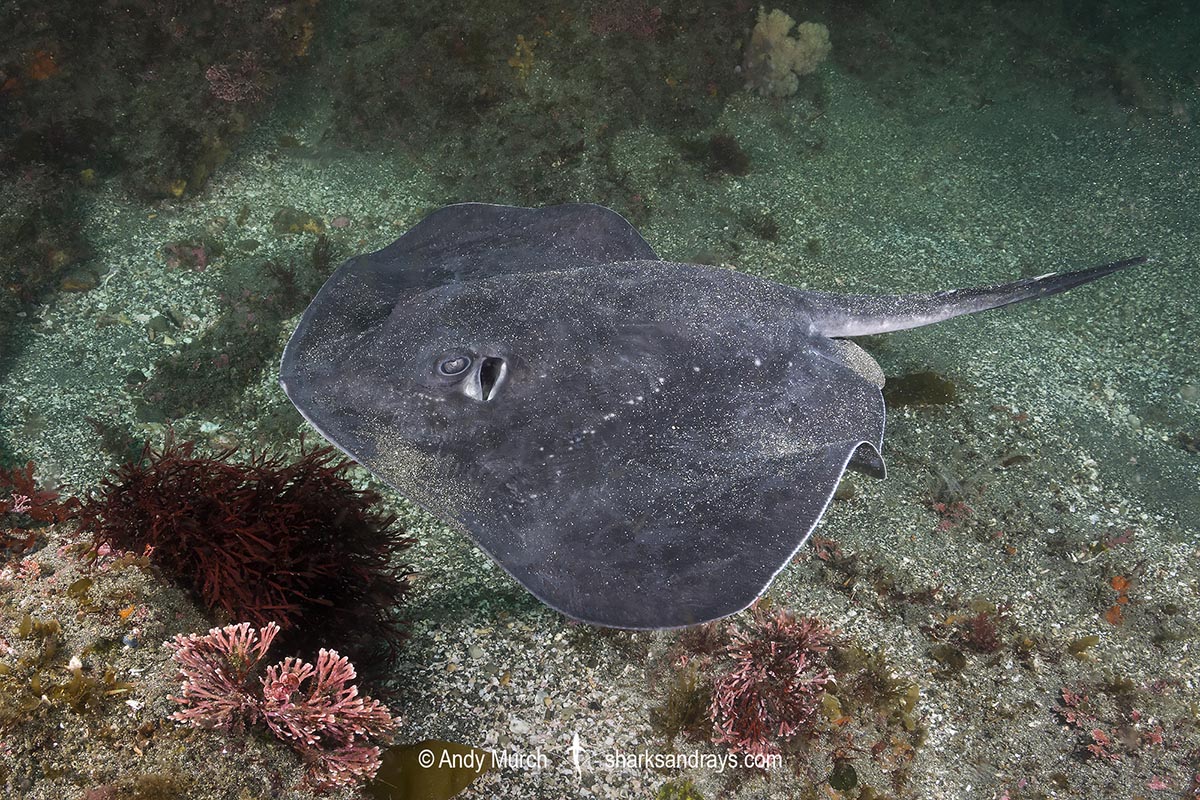
Conservation Status
LEAST CONCERN
The short-tail stingray is a bycatch component of trawl, Danish seine, longline and purse seine fisheries, but is most often discarded. Around 5% of shorttail stingrays caught in the Australian Southern and Eastern Shark and Scalefish Fishery between 2000 and 2006 were retained for market. Shorttail stingrays are commonly caught by recreational line fishers and sometimes harpooned for sport. They are also occasionally captured in shark nets along the coast of South Africa. When captured alive, fishers often amputate the stingray’s tails before releasing them to reduce the risk of injury. Post release survivorship is thought to be quite high based on the number of amputee animals regularly observed by divers.
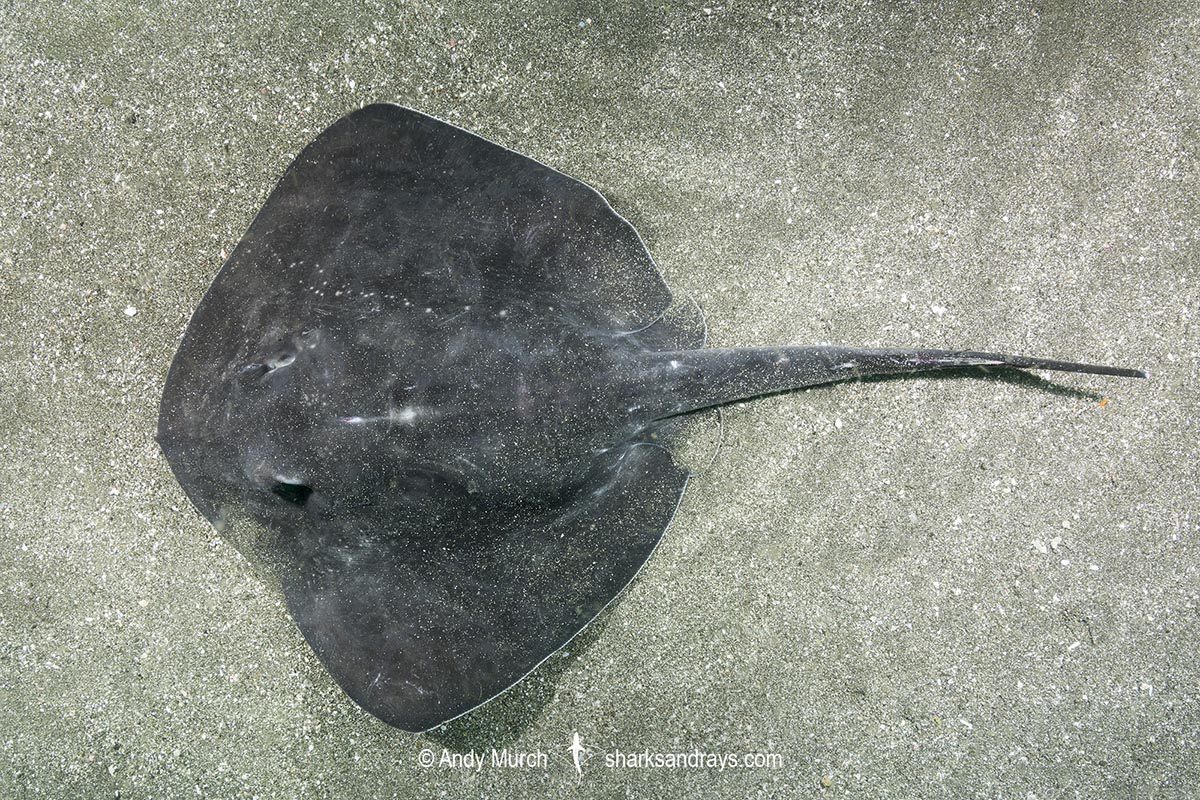
Habitat
Temperate seas. On soft substrates, sometimes adjacent to reefs. From shallow bays (including estuaries) to at least 480m.
Distribution
The short-tail stingray has a patchy temperate distribution.
In the southern hemisphere it occurs around New Zealand (including the Kermadec and Chatham Islands), along the entire southern coast of Australia from southern Queensland to Shark Bay, Western Australia, and in southern Africa from the Zambezi River in Mozambique to Cape Town in South Africa.
In the northern hemisphere it occurs in Japan and St Peter the Great Bay in eastern Russia. Until recently, the northern population was considered a separate species (Dasyatis matsubarai) but recent genetic studies have confirmed that the southern and northern populations are the same species.
Reproduction
Matrotrophic aplacental viviparity. Litter size 6-10.
Diet
Diet consists of invertebrates and small fishes.
Behavior
Forms large mating aggregations, during which many males will follow a single female in an effort to mate with her.
Average depth changes by region. In South Africa short-tail stingrays are mostly found between 180-480m. In Australia they are generally shallower than 150m. This may reflect food availability in each region.
Reaction to divers
Shy but approachable with non-aggressive movements. Generally bolts if approached closely.
Diving logistics
Short-tail stingrays are regularly encountered at numerous sites in southern Australia. In that region, they are usually referred to as smooth stingrays or bull rays.
WEST AUSTRALIA
Although I have seen Short-tail rays on almost every dive at Rottnest Island in Western Australia, I found these big rays very unapproachable at that location. Further south at Hamelin Bay, short-tail stingrays and southern eagle rays swim right up to the beach to forage for scraps discarded by fishermen. At this location the rays have become habituated to humans; accepting fish scraps by hand and allowing tourists to pet them.
SOUTHERN AUSTRALIA
While they can be encountered just about anywhere in southern Australia, for guaranteed encounters head to Narooma Harbour and Montague Island. Both have large populations of short-tail stingrays. They are also common under the jetties/piers near Melbourne, such as Flinders and Blairgowrie Piers. (Intel. Nigel Marsh)
NEW ZEALAND
At the Poor Knights Islands off New Zealand, short-tail stingrays form massive mating aggregations during the summer, where one large female is pursued by scores of males. Timing a visit to coincide with the event is difficult.
Elsewhere in NZ, short-tail stingrays can be found in shallow harbours/estuaries, in the summertime from Nov-end to March. There are usually a few around Tauranga harbour, and in nearby bays around Motiti Island. (Intel. Helen Cadwallader)
SOUTH AFRICA
Enormous smooth stingrays are often observed by divers directly off the beach in Simonstown and at other beaches in False Bay. Night diving is an especially good time to locate them.
What’s new
View our full list of updates
Similar species
Brown Stingray Distinguished by lack of white spots on pectoral fins.

